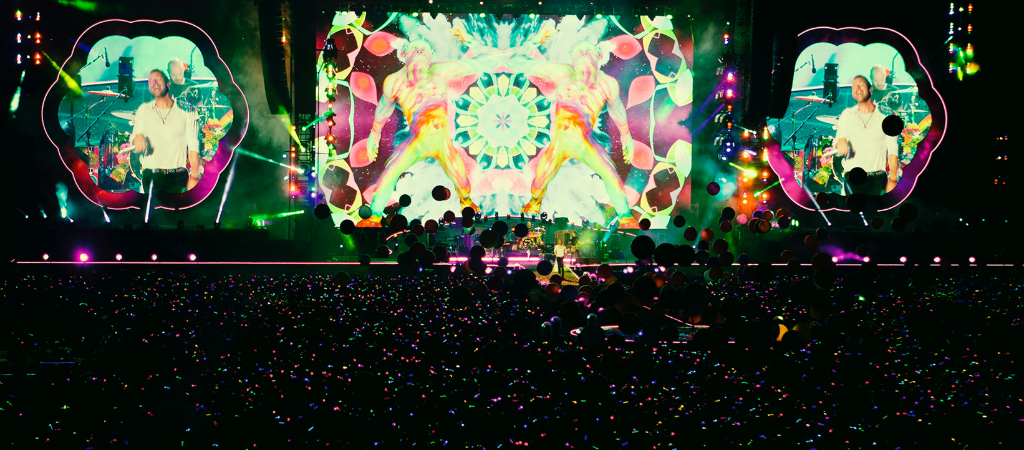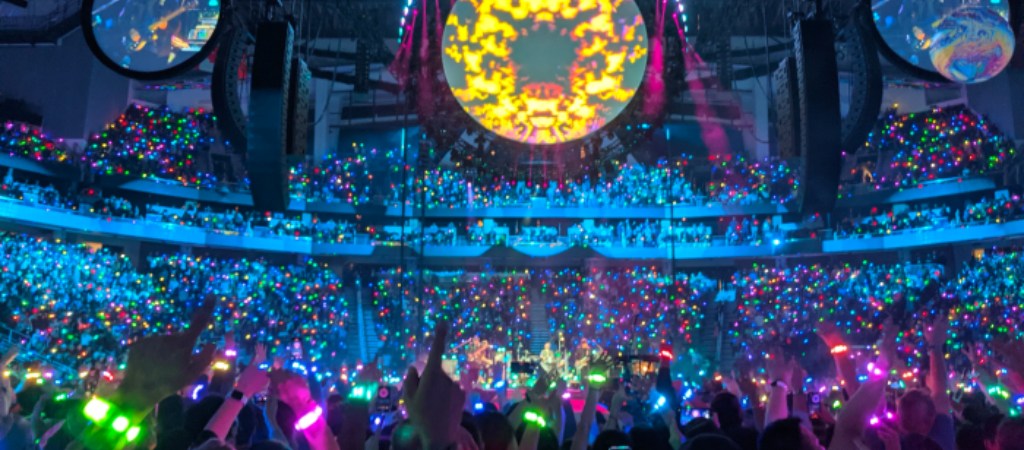Welcome to our Advent calendar. Today we're going to delve into the world of the famous music group Coldplay to find out how they challenged himconcert experience thanks to bracelets luminous connected. This unique initiative combines ecology, inclusion and accessibility, thus providing engaged artistic approach.
The Evolution of Coldplay
Coldplay, the world-famous British alternative rock band, has always been at the forefront of artistic innovation. Since their debut in 1996, they have consistently pushed the boundaries of musical creativity. But over the years, their commitment has extended far beyond the music scene. Coldplay have become a champion of the environment and inclusion, and this philosophy was reflected during their world tour.
An immersive approach
When Coldplay announced their tour for the album “Everyday Life” in 2019, the group chose to innovate in terms of interaction with fans.
Their objective is then to tour in an ecological way. To do this, the group collaborates with PIXMOB to create bracelets luminous connected with 7 LEDs, designed entirely from renewable materials, biodegradable et reusable.
This revolutionary approach combines a positive environmental impact and an unrivaled immersive digital experience, making their concert both interactive, immersive and accessible to all.
The Magic of Pixmob Bracelets
Imagine attending a Coldplay concert: instead of just watching the stage from the crowd, you become an integral part of the show, lighting up the arena with thousands of other fans. This is exactly what Pixmob light bracelets allow. These small accessories, worn on the wrist, can light up in different colors, flash and much more, at any time during the show. The magic behind these bracelets is the fruit of the work of the Quebec company Pixmod.
Source: PIXMOB, Coldpaly – Music of the spheres The Tour
The bracelets allow audiences tointeract with live music:
- They vibrate in sync with the music;
- They change color to reflect the mood of the current song;
- They display lyrics in real time.
Determined to make their concerts accessible to all, connected bracelets are designed to provide accessibility features, such thatconverting music into vibrations for hearing-impaired fans. In addition, special areas were set up for fans with reduced mobility.
This immersive experience transformed a simple concert into a multisensory show, where the music was felt as much as it was heard.
How does it work?
Vincent Leclerc, co-founder of Pixmob, explains how this innovative technology works: “We use a really old technology, which is infrared, like with television remote controls. Imagine giant remote controls that are installed in stadiums and which will simultaneously control tens of thousands of bracelets.”
Each Pixmob bracelet incorporates two to six LED bulbs and an electronic chip that interprets the information transmitted in infrared, creating a breathtaking light show.
What about ecology then?
Coldplay's 7 LED bracelet marks a major milestone in sustainability. Made from compostable plant-based plastic, it is sourced from renewable sugarcane, ensuring that the production process has minimal environmental impact. The materials used are grown in compliance with a “supplier code of conduct,” which requires sustainability practices monitored by third-party inspectors. This ensures that sugarcane cultivation does not contribute to deforestation or the displacement of the food supply.
The 7 LED bracelet uses processed PLA plastic which has a 400% lower carbon footprint than regular plastic (PET). This means that the production of one million units of these bracelets only emits 8 kg of CO500 equivalent, the equivalent of driving a car for a year.
Sustainability all the way
An innovative feature of the 7 LED bracelet is the use of patented “living hinges”, which transform the hard plant-based plastic into a bendable band. This makes the bracelet easy to disinfect and reuse, reducing the demand for new raw materials.
In addition, at the end of the product's life, the plastic envelope is removable and decomposes in just two months in an industrial composter, or in two years in ordinary compost.
This closed-loop approach minimizes plastic waste and contributes to environmental protection.
Conclusion
The 7 LED bracelet marks a significant step forward towards more environmentally friendly and inclusive music touring. It embodies a commitment to a more ecological future by using durable and reusable materials, but also interactive.
This initiative is not just a light accessory, it strongly symbolizes Coldplay's commitment to entertainment that favors more environmentally friendly practices.
Finally, this digital experience demonstrates how the arts and technology can combine to offer an unforgettable experience, while highlighting humans in the foreground and raising awareness of global issues.
Nour Hebiri, Senior Product Designer UX-Republic



